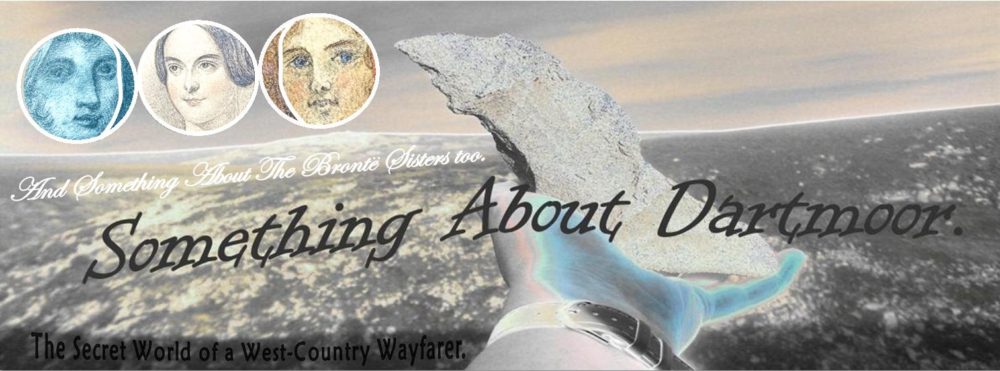Yesterday – Friday 22nd July 2016 – I enjoyed a family visit to the ‘War Horse Valley Country Farm Park’ near the West Devon village of Iddesleigh. The farm park is set in idyllic countryside at the end of a typical Devon high-hedged lane that neighbours Michael Morpurgo’s own ‘Farm for City Children’ – Nethercott House. Because there is a retirement home for old horses just down the road also – there are horses grazing the patchwork of rolling green fields as far as the eye can see; this corner of West Devon really is ‘Joey’ heaven.

Dartmoor in the distance from Henacroft Cross near Iddesleigh. Scenes from War Horse – the movie – were filmed at Dittswothy Warren on Dartmoor.
‘Parsonage Farm’ itself – is first a working organic farm, with a large herd of dairy Friesian cows that get milked twice a day.
On the day of our visit – there were a group of calves housed in a big clean airy barn and we were able to go in and say ‘Hello’ and wander through their well-bedded stalls. Such inquisitive bright-eyed animals – if only all farms cared for their stock in such a wholesome way.
On our arrival – Farmer Ward was there to welcome us – his friendly way got our visit off to a perfect start. Our time at the farm – about three hours plus, was just so relaxed – it is no wonder that the livestock there are so stress-free and vital.
How we enjoyed our cream tea over-watched by a couple of animated pigs! As well as the delicious homemade scones, jam and cream – we also enjoyed a bellyful of laughs watching the antics of these two beautiful Gloucester Old Spots. (Not to mention the noises!)

‘Chelt and Ham’ the Parsonage pigs joining in the conversation…(“Trying to climb over the garden wall!” – lyrics from the Sow Song.)
All nicely served under a large, purple umbrella –
with wafts of Lavender from the well-tended garden.
Because of the Parsonage pigs we remembered a song from our youth. My Dad used to amuse us as children with a song called the ‘The Sow Song’ – and he’d make all the funny noises. When we got home from the farm – I found this on ‘You Tube’ – just watch it and laugh!
There is plenty to see at the farm – including a display of lovely old hand-tools and vintage farm machinery. Inside a long, converted byre – there is a ‘farming calendar’ showcasing each month of the year and the farming methods used a century ago – some of which are still practiced.
I especially loved looking through misshapen holes in weathered barn doors – 


and running my hand gently over warm cob walls –
and details like this rusty old horse shoe in a byre window – perhaps one of Joey’s?
The farm’s Great War museum is inside a huge lofty barn and all the while we were engrossed looking at the large display of exhibits – chattering swallows were flying high above our heads – through the oak rafters. 
There is a real warmth about the whole place – the buildings, the animals and from the owners themselves.
* * * * * * * * * * * * * *
Without the impracticality of sinking knee-deep in hellish mud – there is an area on the farm where you can enter a credible trench – complete with sound-effect explosions. In the heat of the afternoon, the air inside felt stale and dark – and claustrophobic. With each intermittent blast – it was just palpable to envisage the menace of what it must have been like to be cooped-up inside a World War I trench with little hope of seeing daylight – or home ever again.
 Back outside – how different things would have been one hundred years ago for the two youngest members of our group – both sixteen year old boys on the threshold of life. One Devon born and bred and the other – half Viennese and a fluent German speaker.
Back outside – how different things would have been one hundred years ago for the two youngest members of our group – both sixteen year old boys on the threshold of life. One Devon born and bred and the other – half Viennese and a fluent German speaker.  As they sat side by side on the swing seat after eating their cream tea – two cousins laughing and looking out over rolling green fields and hopefully to a bright future – I thought may they never know the true horror of war other than what they learn from history – and through the power of inspired story telling.
As they sat side by side on the swing seat after eating their cream tea – two cousins laughing and looking out over rolling green fields and hopefully to a bright future – I thought may they never know the true horror of war other than what they learn from history – and through the power of inspired story telling.
If you’ve read the book, seen the movie – and the stage play – you haven’t truly completed the War Horse experience until you have spent a blissful Summer’s afternoon at ‘Parsonage Farm’ Iddesleigh – and enjoyed the best homemade cream tea EVER – under a Devon Heaven.
* * * * * * * * * * * * * *
I finished my visit gathering a handful of white feathers from around the farm pond.
100 years ago – white feathers were given to shame men who didn’t fight for King and Country; a white feather symbolised cowardice. Another aspect of the hostility of war.








